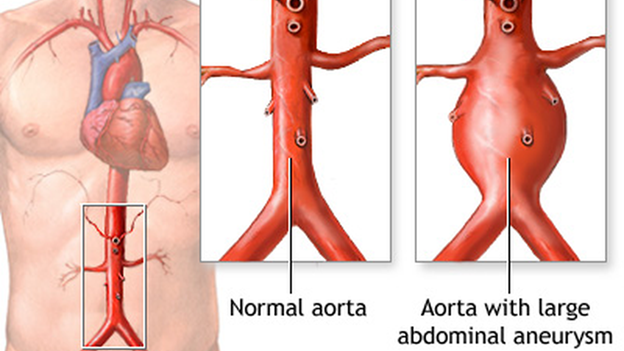Recognizing the critical nature of an aortic aneurysm is key to maintaining good health. Catching it early can prevent significant health problems. By understanding the aortic aneurysm types, risk factors, and aortic aneurysm symptoms, you’ll be equipped to take the right steps in protecting yourself. This guide will empower you with vital knowledge, highlighting the role of genetics and lifestyle choices. These elements are crucial in both spotting and preventing aortic aneurysms before complications arise.
Understanding Aortic Aneurysms and Their Risks
An aortic aneurysm is when the main artery of your body, the aorta, becomes enlarged. There are two aortic aneurysm types to know: abdominal, occurring in the abdomen, and thoracic, which happens in the chest. Spotting these is challenging, but ignoring them can be dangerous. If unattended, they can burst, causing severe internal bleeding.
Family history matters a lot here. If you have relatives with a history of aortic aneurysms, your risk might be higher. This genetic link can hint at possible future issues. Thus, knowing your family medical history can help in preventing the dangers of an aortic aneurysm. By understanding and addressing these aortic aneurysm risk factors, you take an essential step in safeguarding your health.
Detecting Aortic Aneurysms Early: Symptoms and Screenings
A major challenge of aortic aneurysms is that they’re often silent — you might not notice any signs until they become serious. Early screening tests are crucial. Being ahead of the issue means you can manage it before it becomes critical. Here’s what to look for with aortic aneurysm symptoms:
- Feeling a throbbing sensation near your belly button.
- Experiencing serious tummy or back pain.
If you notice these, consult a doctor right away.
Doctors use different tests to check for aortic aneurysms. The most common are abdominal ultrasounds, CT scans, and MRIs. These tools help find issues before they become emergencies. Who should get regular check-ups? Here’s a quick guide:
- People over 65, mainly men, should have regular screenings.
- Those with a family history of aortic aneurysms.
- People with heart diseases.
These screenings can find problems early on. Acting quickly could mean the difference between early treatment and serious complications.
Proactive Health: Prevention and Treatment Options
Living a healthy lifestyle plays a significant role in preventing aortic aneurysms. Quitting smoking is one big step. Smoking hurts your artery walls, making aneurysms more likely. Also, keeping a healthy blood pressure helps in aortic aneurysm treatment.
Regular doctor visits are vital. They monitor your overall health, catching issues early. Doctors might suggest changes in diet and exercise, which are non-invasive but quite effective. If you’re diagnosed with an aortic aneurysm, here’s what might happen:
- They might simply keep an eye on it if it’s small and growing slowly.
- If larger or risky, aortic aneurysm surgery could be the right action.
Surgery involves fixing or replacing the weak aorta part. However, not everyone needs immediate surgery. Decisions are based on size and growth. Make these choices with your doctor, understanding your specific situations and options.
If severe symptoms suddenly appear, seek emergency help immediately. Fast action is the key to handling emergencies better. Always stay informed and take preventive steps. This approach keeps your health in your hands, reducing potential aortic aneurysm causes related risks.
By understanding what an aortic aneurysm is and recognizing early signs, you protect yourself effectively. Remember, knowing potential aortic aneurysm risk factors enables you to take proactive steps toward a healthier life.

